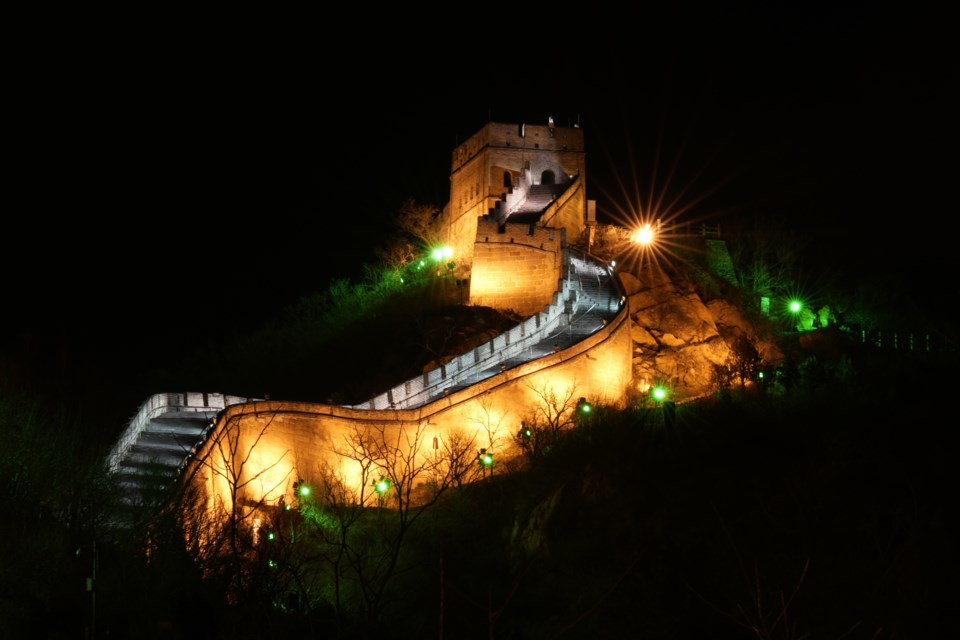ZHANGJIAKOU, China — The Great Wall of China wasn't just a decorative theme in the mountain zone of the Beijing Olympics — the historic landmark itself was visible from several venues.
The Zhangjiakou zone hosted events in freestyle skiing and snowboarding, as well as the Nordic disciplines of biathlon, cross-country skiing, and ski jumping.
Features on the slopestyle course were made to look like the Great Wall and decorations in all venues featured stylized renderings of the ancient wonder.
But the Great Wall itself was visible along distant mountain regions south of the venues, especially the hub hosting the Nordic sports.
Made of local stones, the section of the Great Wall often blended into the mountainous terrain during the day but it was lit up at night, cutting a radiant line along the ridges on clear evenings.
The city of Zhangjiakou was a military stronghold in ancient times, earning it the nickname "The Northern Gate of Beijing."
Strategically located at the centre of several important transport arteries, it remains a critical travel hub from the province of Hebei to Inner Mongolia, connecting northwest China, Mongolia, and Beijing.
The Great Wall was built as a defence against the ancient Mongols and Dajingmen, an important gate and junction of the Great Wall of China, is located in Zhangjiakou.
This report by The Canadian Press was first published Feb. 20, 2022.
The Canadian Press


